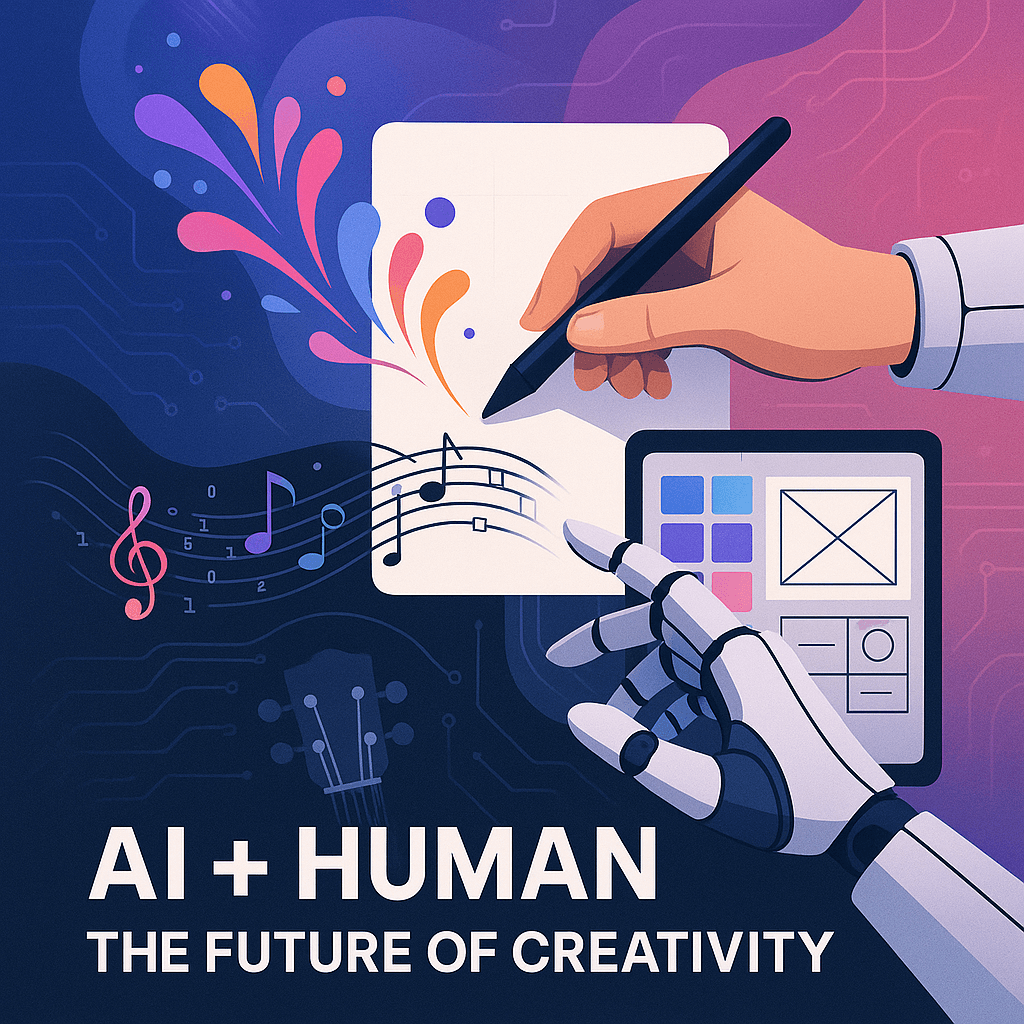The Evolution of AI in Creative Industries: Art, Music, and Design

The Evolution of AI in Creative Industries: Art, Music, and Design
Artificial Intelligence has long been associated with logic-heavy fields like finance, healthcare, or logistics. But in recent years, a quiet revolution has been taking place in the creative sectors. From digital art and algorithmic music to automated design assistance, AI is proving to be a powerful collaborator rather than a replacement for human creativity.
This evolution is not just about convenience or automation—it’s reshaping the very nature of creative expression.
AI in Art: Generating the Unexpected
AI art generators like DALL·E, Midjourney, and Stable Diffusion are enabling artists to push boundaries in ways never imagined. These tools analyze thousands of images to generate unique visual outputs based on user prompts. While some critics fear AI might dilute artistic originality, many artists are embracing it as a co-creator.
Rather than replacing the artist, AI often acts as a sketchpad—helping conceptualize ideas, iterate faster, or discover new styles. For example, concept artists in gaming and film now use AI to prototype entire scenes in minutes, accelerating the creative workflow.
AI is also driving interest in generative art—artwork created in part by algorithms. These pieces often possess a degree of randomness that introduces elements of surprise, bridging structured programming with organic creativity.
AI in Music: Beyond Beats and Algorithms
In music, AI is doing more than composing background loops or ambient noise. Platforms like AIVA, Amper Music, and Google’s Magenta project are empowering composers to create melodies, harmonies, and even entire albums using AI.
Musicians use AI for idea generation, song structuring, and sound synthesis. Tools can analyze emotional patterns in music to help tailor compositions for films, ads, or video games. Some AI systems can mimic the style of a specific artist, enabling producers to experiment with new sounds that would be impossible to create with traditional instruments alone.
Importantly, AI in music is not confined to professionals. Independent creators and hobbyists are using AI to explore their musical ideas without needing expensive software or formal training.
AI in Design: Your New Creative Partner
Designers today face the challenge of creating personalized, high-impact content at scale. AI is stepping in as a creative assistant—suggesting layouts, adapting designs to different screen sizes, and even generating branding elements.
Tools like Adobe Sensei, Canva’s Magic Design, and Figma plugins leverage machine learning to streamline the design process. AI can analyze user behavior and make real-time suggestions for improvements, significantly enhancing user experience (UX) and interface design.
In web and graphic design, AI also assists with typography choices, color palettes, and visual hierarchy, reducing decision fatigue and accelerating workflows. The result: better designs delivered faster, with data-informed precision.
Collaboration, Not Competition: The Human-AI Creative Relationship
The biggest misconception about AI in creative industries is that it replaces the need for human imagination. In reality, the most compelling results come from collaboration. AI handles repetition, analysis, and suggestion—freeing up human creators to focus on narrative, emotion, and intent.
Think of AI as a partner that expands what’s possible, rather than narrowing creative paths. While the tools are powerful, the ideas, curation, and context still depend on the human touch. As AI democratizes access to creative production, it opens doors for a more diverse range of voices and visions.
The Future: What’s Next for AI and Creativity?
As AI models become more sophisticated, they will likely transition from being reactive tools to proactive collaborators. We may see AI contributing not just to production, but also to concept development, audience analysis, and even cross-cultural adaptations.
However, the rise of AI also raises important questions:
- Who owns AI-generated content?
- How can creators retain authorship in collaborative works?
- What ethical guidelines are needed to prevent misuse?
These questions don’t have easy answers, but addressing them will be key to ensuring AI enhances, rather than diminishes, the value of human creativity.
Conclusion
AI is not here to replace the artist, musician, or designer—it’s here to inspire them. From speeding up workflows to unlocking entirely new forms of expression, artificial intelligence is expanding the creative landscape in profound ways.
As we move forward, the most innovative creators will be those who understand how to work with AI, embracing its strengths while staying rooted in human intuition. The future of creativity is not machine-made, it’s machine-augmented.